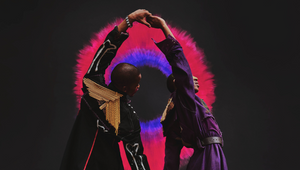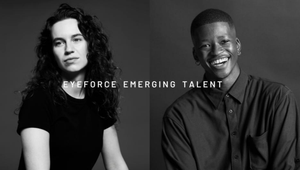
Behind the Scenes: Action Sports Cinematography
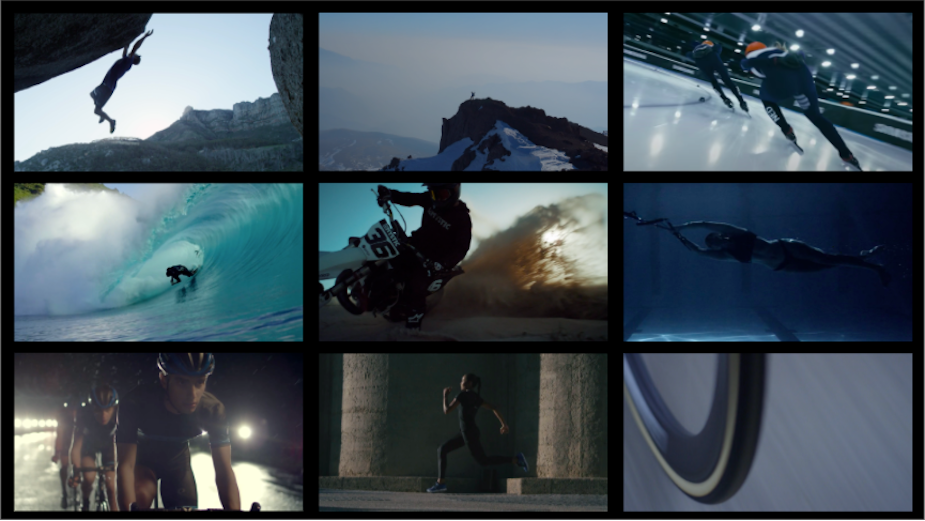
The ultimate aim of sport cinematography is to transport viewers into the athletes' world. But how to capture what an athlete is experiencing at that very moment? To become one with the athletes' world, as a sports cinematographer you need to be able to shoot super fast subjects, understand the athlete demands…. and sometimes, position yourself in extreme terrain.
1) Filming techniques
Quad Action
When filming fast moving athletes like cyclists, a good vehicle to work with is a six-wheel quad. It is a tracking vehicle specially modified for mounting a wide range of camera configurations to it. This way you can keep up with the athletes and film them close up with a lot of stability at speed.
- Using the six wheel quad to capture freestyle motorbike stunt performer Robbie Maddison riding on water
Water sports
Underwater cinematography is a very specialised type of sports cinematography. It takes a seasoned surfer to be able to position himself in the right position to get really close to the surfer. With other types of water sports, like kitesurfing or windsurfing, wave knowledge might not always be essential, but a good understanding of the sport will help you to estimate when an athlete will jump, which trick they are performing, and thus where they is going to land.
Needless to say that a water-housing for your camera is a necessity when shooting water sports. But to line up for that money shot and be safe, a basic kit for underwater shoots could include:
- a custom made SPL or Salty water housing
- a Red Epic Dragon camera, which can shoot 4k raw images at 120 fps or an Arri Alexa Mini
- a set of DaFins
- a wetsuit to keep you warm, to help you float and to protect you from the reef
- a helmet to keep you safe from fin- and reef cuts

- Arthur Neumeier with Oneill 2/3 psychofreak wetsuit, DaFins, Gath helmet and custom build water housing

- Underwater cinematographer Arthur Neumeier in action
The best way to keep a clean port (the glass section of your water housing), is to lick it! Right before you are going to take the shot, lick it, press record and you’ll see that the water will smoothly run of the port of your water housing without leaving any drops.
For shoots that are completely submerged, and where the camera needs to be below a depth of three meters (nine feet), a Gates water housing is recommended. The gates water housing can be made neutrally buoyant by creating a vacuum inside the housing, and is able to handle the pressure of the water above you when diving down.
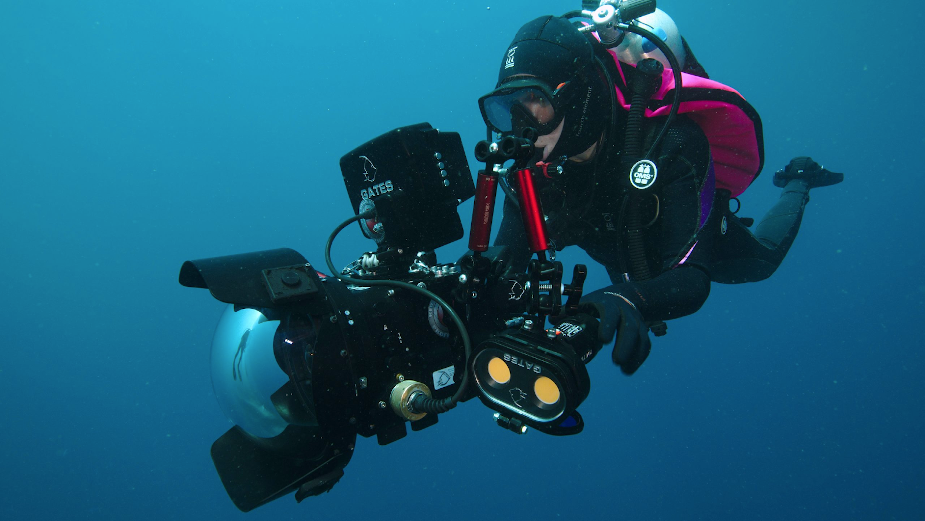
- The Gates water housing for submerged shoots
Interested to read more about underwater cinematography, check out this article by underwater cinematographer Arthur Neumeier: How to shoot in 20 foot waves.
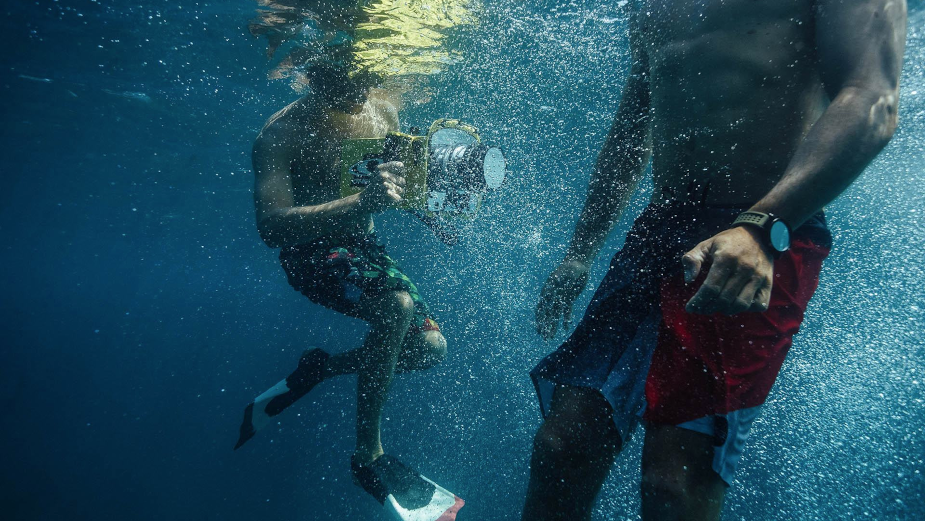
- Underwater cinematographer Arthur Neumeier in action
Drones and helicopters
A well timed aerial shot can lift any production to new heights.
Drones are often fitted with wide angle lenses, which is great for landscape cinematography, but if you want to capture fast moving sports and create a sense of speed into the image, then it’s better to use slightly longer lenses. This gets you closer to your subject and let’s the background move way faster, creating a sense of motion. Shooting with drones that have a slightly longer lens will give imagery that have that ‘helicopter feel’. This setup is great for lower production budgets, or if logistics or law don’t allow you to rent a real helicopter. An example of such a setup is a DJI Inspire 2 with a Zenmuse x7, equipped with a 45mm lens. Because of the crop factor of the sensor (x 1.5), the effect of the zoom lens is that of a 70mm.
If there is proper budget, you can fly with bigger drones that can hold cinema cameras like RED or Arri mini. A bigger dynamic range and a bigger range of lens options will give you much more control of the aesthetic of your image.
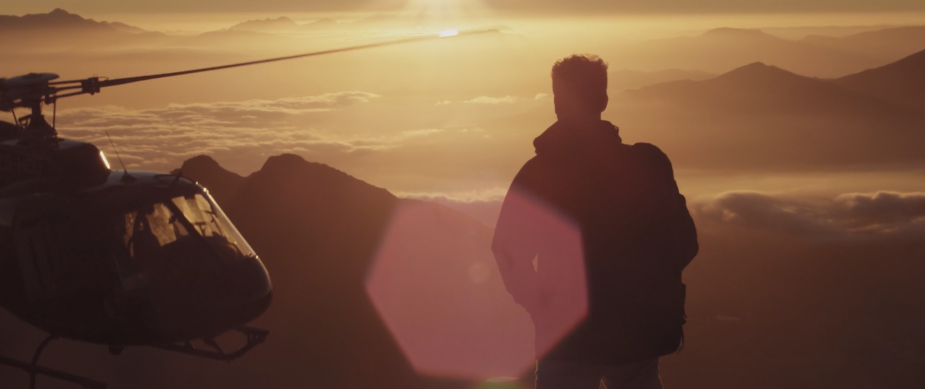
- A shot from Mystic Breaking Boundaries by Eyeforce, directed by Shueti
In some cases, using a drone is not possible because the subject is just going to fast or too far. Like for example when you want to film a Dakar rally car racing across the desert. In this case you want to be as fast, or even faster than the car, to get into the right positions. The best setup for this scenario is a helicopter mounted with a Cineflex system. The Cineflex is a gyro stabilised device and allows you to use zoom lenses like the canon 50-1000mm to get extremely fast moving close ups.
Interested to read more about shooting sports cinematography with the Cineflex system - check out this article by our director Bob van de Gronde.
- Eyeforce Aerial Reel
2) Working with Athletes
Working with athletes is not the same as working with actors, or even artists for that matter. When shooting them and their performance, you have to keep in mind a few factors.
First of all a warming up is essential. Most often an athlete first needs to warm up to be able to perform, and to reduce the change of injuries. It’s important to keep this in mind for your prep time. Next to warming up, staying 'warm' is just as important. Check with the athlete’s management beforehand how long the athlete is capable of performing for a shot and how much time he or she needs in between shots to stay warm. This can affect the planning more than you think.
3) Surviving the Outdoors
Outdoor sports cinematography is a sport on itself and is as challenging as it is fun. First of all you need to really be fit to keep up, otherwise things will get less fun very fast. Especially when shooting action sports outdoor, you sometimes have to endure extreme circumstances.
Local knowledge of the area is essential to be at the right place at the right time. For some shoots it can therefore be wise to use the knowledge of local athletes to learn more about the terrain and weather systems. It’s important to prepare for different scenarios and adapt to last minute changes. Obviously the smaller the team, the more lean and mean you can be.
From going after your athlete in the deep snow to carrying your gear to great heights during a climb, you need to keep in mind to travel light. Everything you bring, you need to carry.
Sometimes it’s better to be smart then brave.. when the area allows you to fly a helicopter, it’s faster and sometimes even cheaper to arrange a drop off at the peak of the mountain instead of hiking up the hill with the whole team (if you consider day fees and sherpa crew).
- D.O.P. Stefan Janssen getting back in the helicopter during a shoot in the French Alps
Click here for more action sports cinematography.
- A signature style Eyeforce edit example | Mystic Breaking Boundaries








